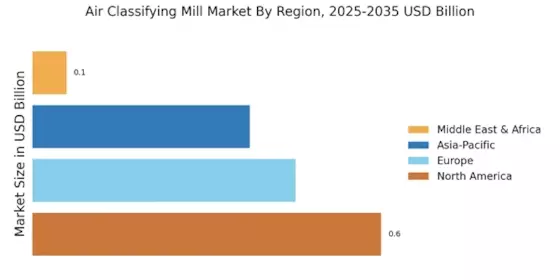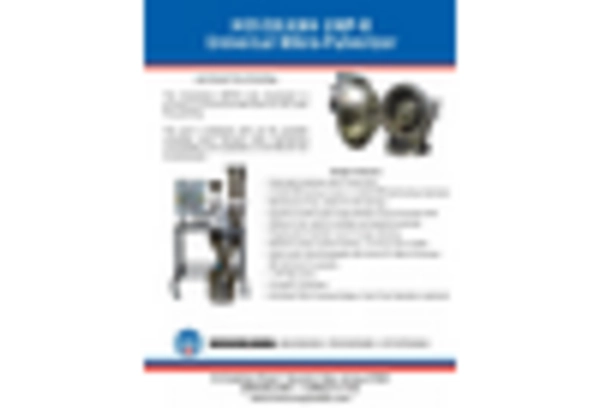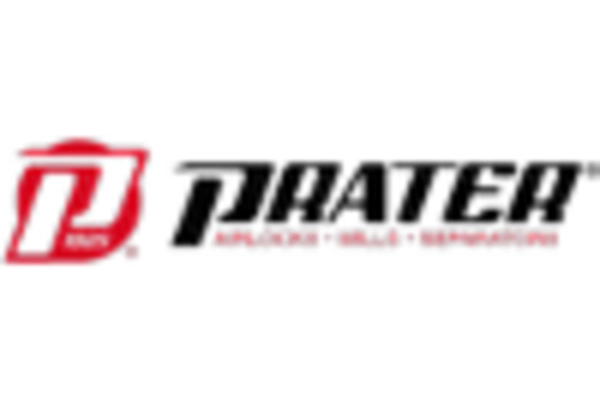Rising Demand for Fine Particles
The Air Classifying Mill Market is experiencing a notable increase in demand for fine particles across various sectors, including pharmaceuticals, food processing, and chemicals. This trend is driven by the need for precise particle size distribution, which is essential for product quality and performance. As industries strive for higher efficiency and effectiveness, the ability to produce ultra-fine powders has become a critical factor. Reports indicate that the demand for fine powders is projected to grow at a compound annual growth rate of approximately 5% over the next few years. This growth is likely to propel the Air Classifying Mill Market, as manufacturers seek advanced milling solutions to meet these evolving requirements.
Increased Investment in R&D Activities
Investment in research and development is a key driver for the Air Classifying Mill Market. Companies are recognizing the importance of innovation in maintaining competitive advantage and meeting the diverse needs of their customers. Enhanced R&D efforts are focused on developing new materials, improving milling techniques, and creating customized solutions for specific applications. This trend is expected to foster collaboration between manufacturers and research institutions, leading to breakthroughs in milling technology. As a result, the Air Classifying Mill Market is likely to benefit from a wave of new products and solutions that cater to the evolving demands of various sectors.
Expansion of the Food and Beverage Sector
The Air Classifying Mill Market is significantly influenced by the expansion of the food and beverage sector. As consumer preferences shift towards healthier and more natural products, there is an increasing need for finely milled ingredients. The ability to achieve specific particle sizes is crucial for enhancing the texture and flavor of food products. Market data suggests that the food and beverage industry is expected to grow at a rate of around 4% annually, which in turn is likely to boost the demand for air classifying mills. This growth presents opportunities for manufacturers to innovate and develop tailored solutions that cater to the unique needs of this sector.
Technological Innovations in Milling Equipment
Technological advancements play a pivotal role in shaping the Air Classifying Mill Market. Innovations such as improved air flow systems, enhanced classifier designs, and automation are transforming the efficiency and effectiveness of milling processes. These advancements not only increase production rates but also improve energy efficiency, which is a growing concern among manufacturers. The integration of smart technologies and IoT in milling equipment is expected to further enhance operational capabilities. As industries increasingly adopt these technologies, the Air Classifying Mill Market is likely to witness a surge in demand for state-of-the-art milling solutions that offer superior performance and reliability.
Growing Focus on Sustainable Manufacturing Practices
Sustainability is becoming a central theme in the Air Classifying Mill Market, as manufacturers are increasingly adopting eco-friendly practices. The push for sustainable production methods is driven by regulatory pressures and consumer demand for environmentally responsible products. Companies are exploring ways to minimize waste and energy consumption in their milling processes. The adoption of air classifying mills, which are known for their efficiency and reduced environmental impact, is likely to rise as a result. Market trends indicate that the sustainability initiatives within the manufacturing sector could lead to a 3% increase in the adoption of air classifying technologies over the next few years.


















Leave a Comment